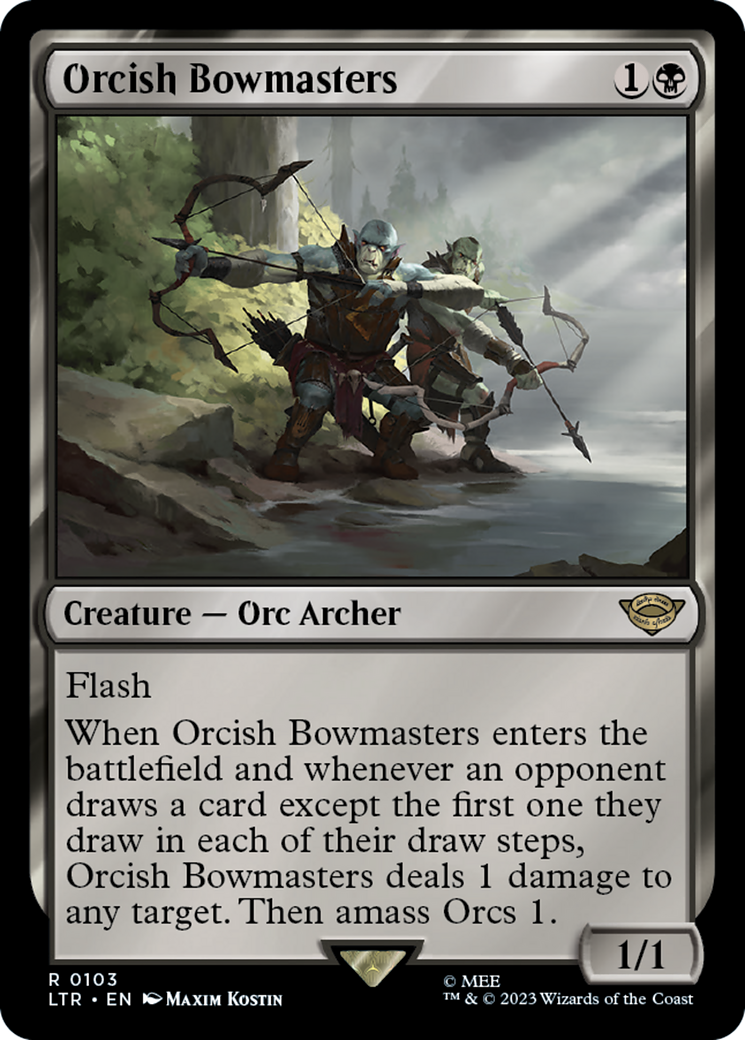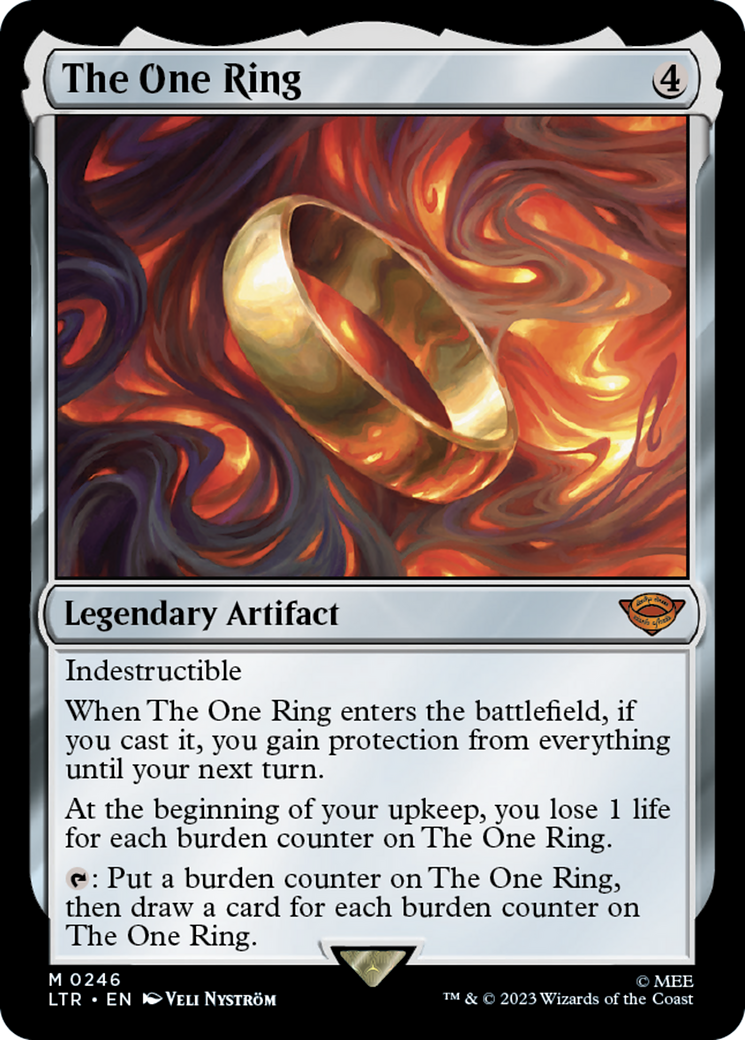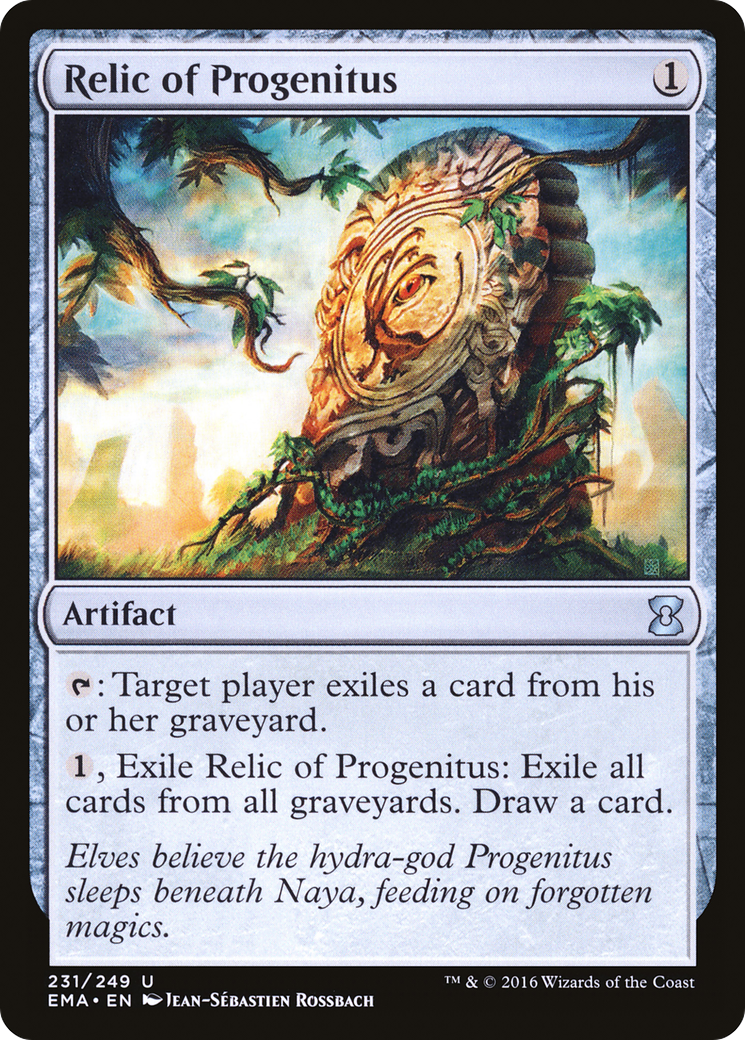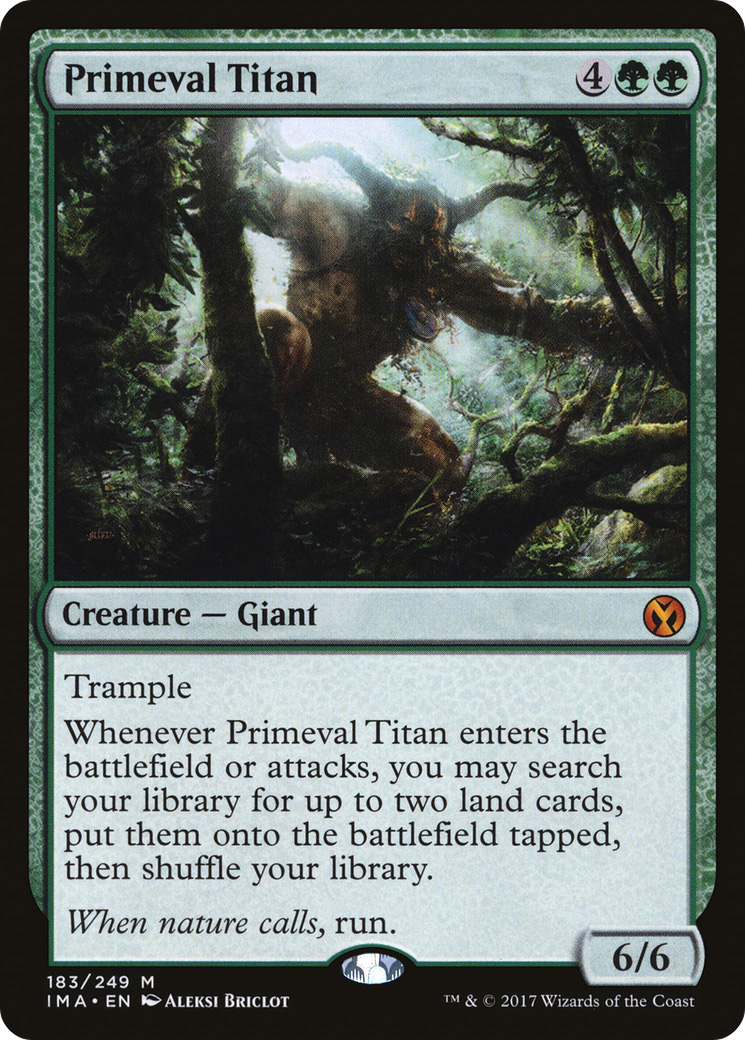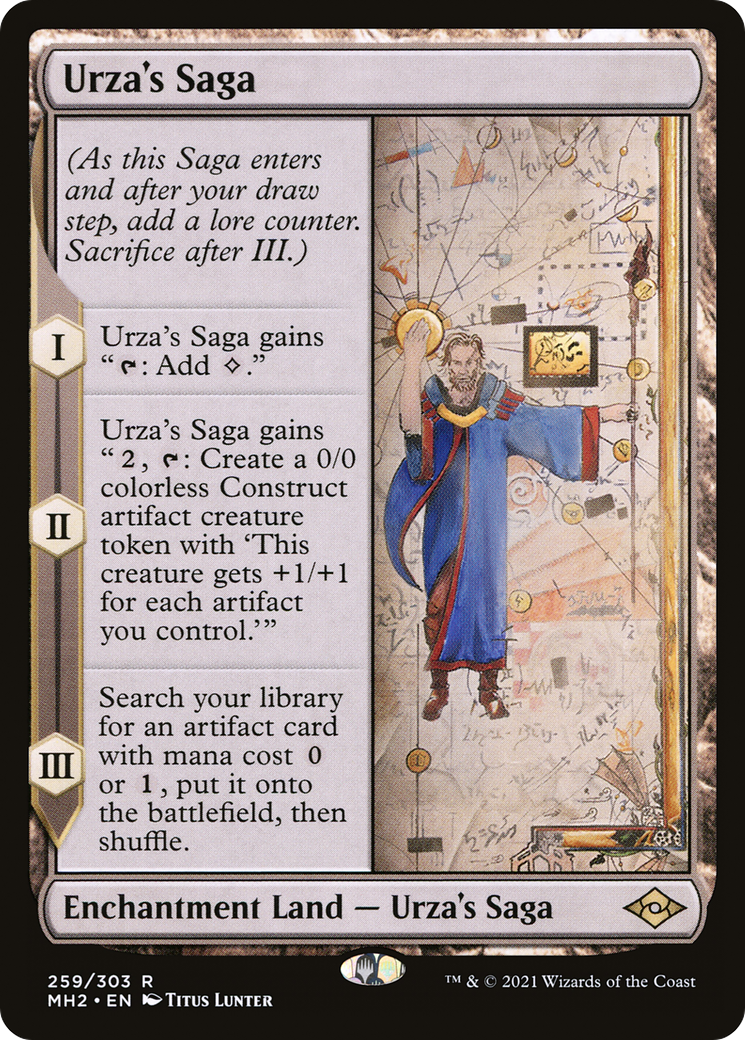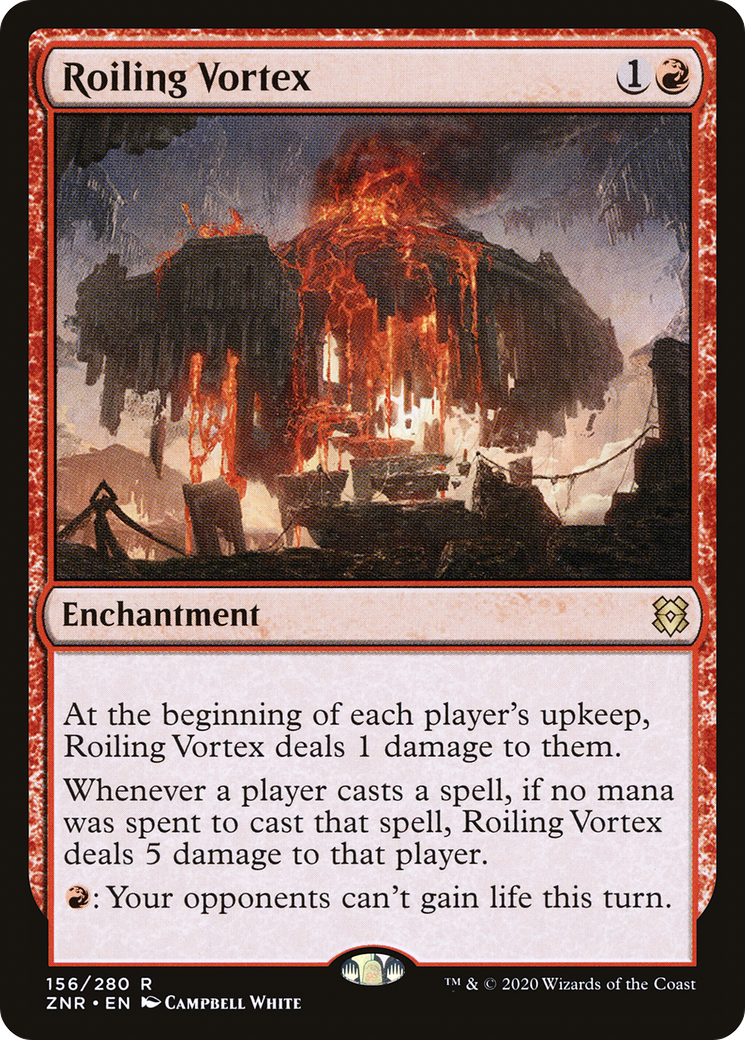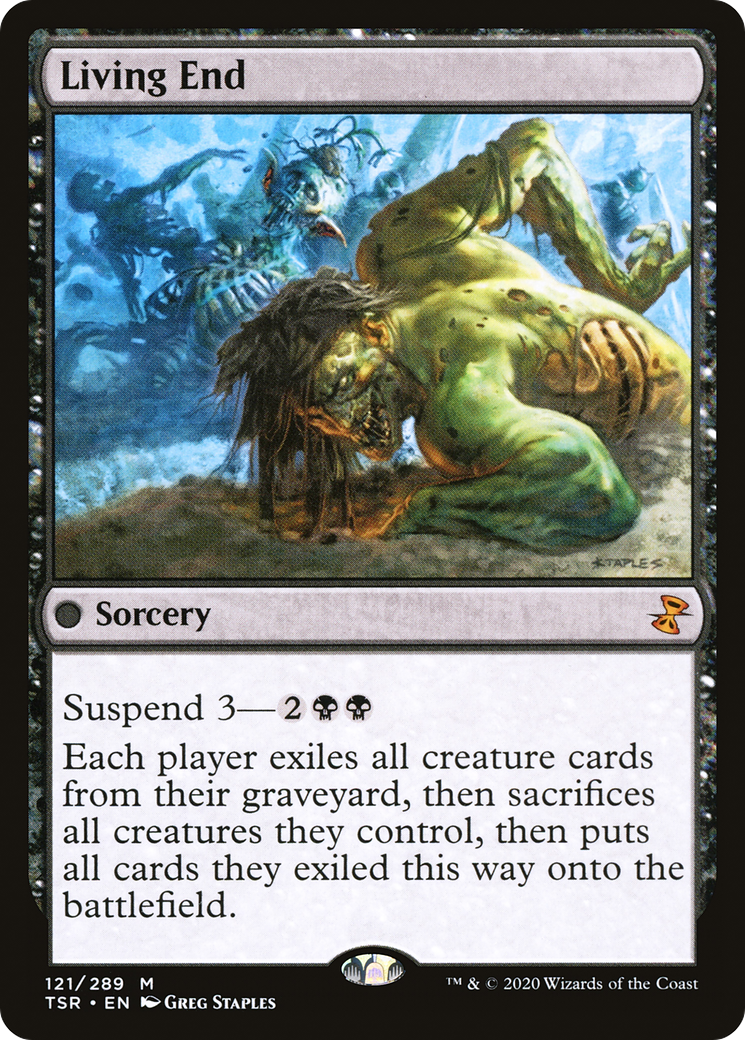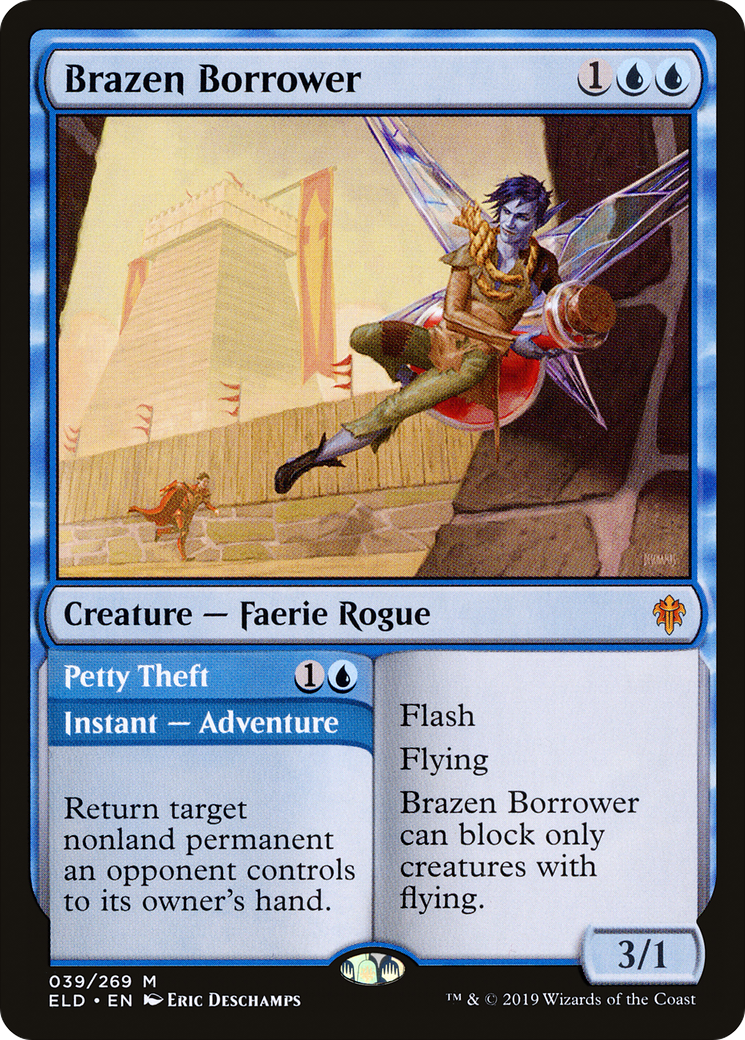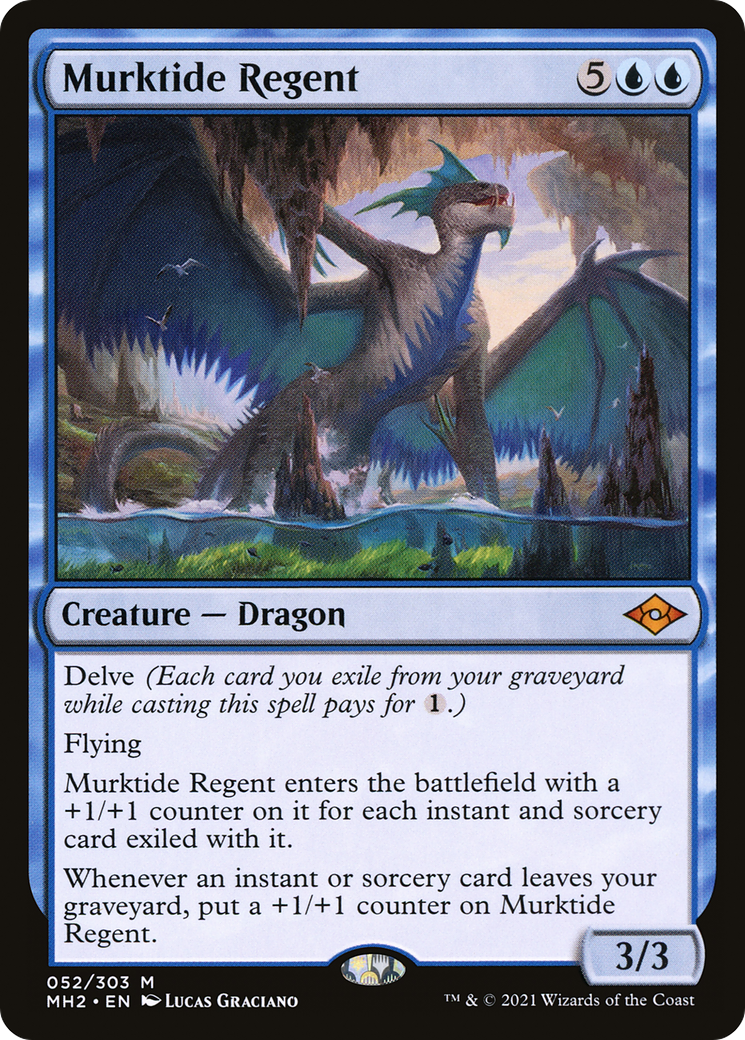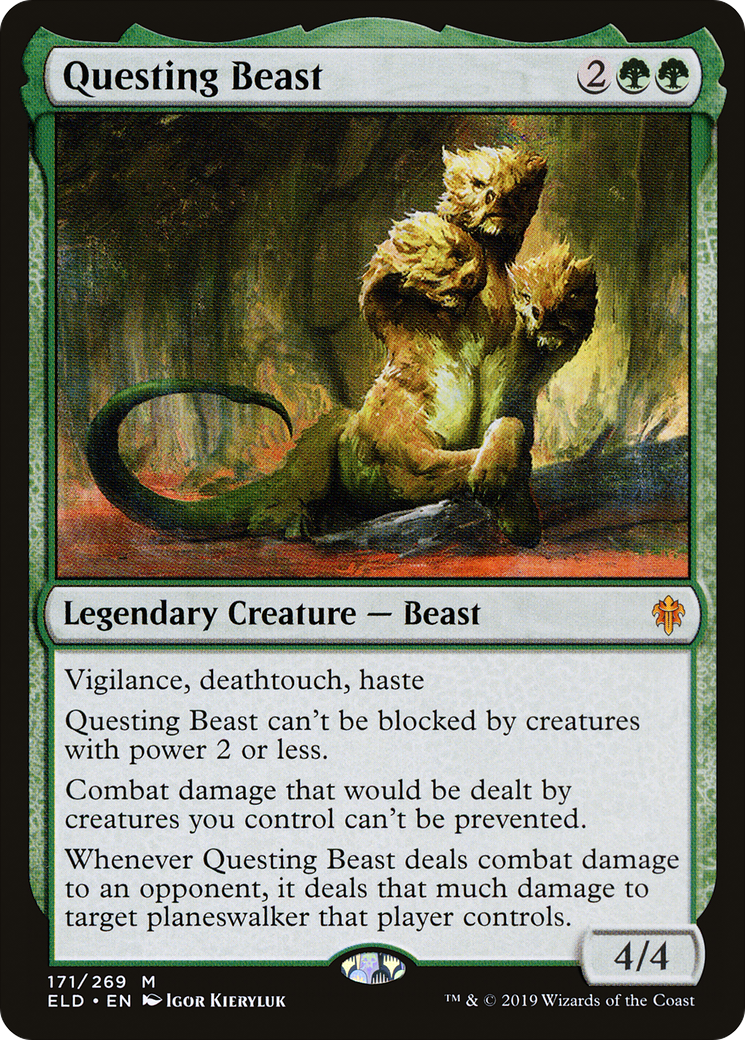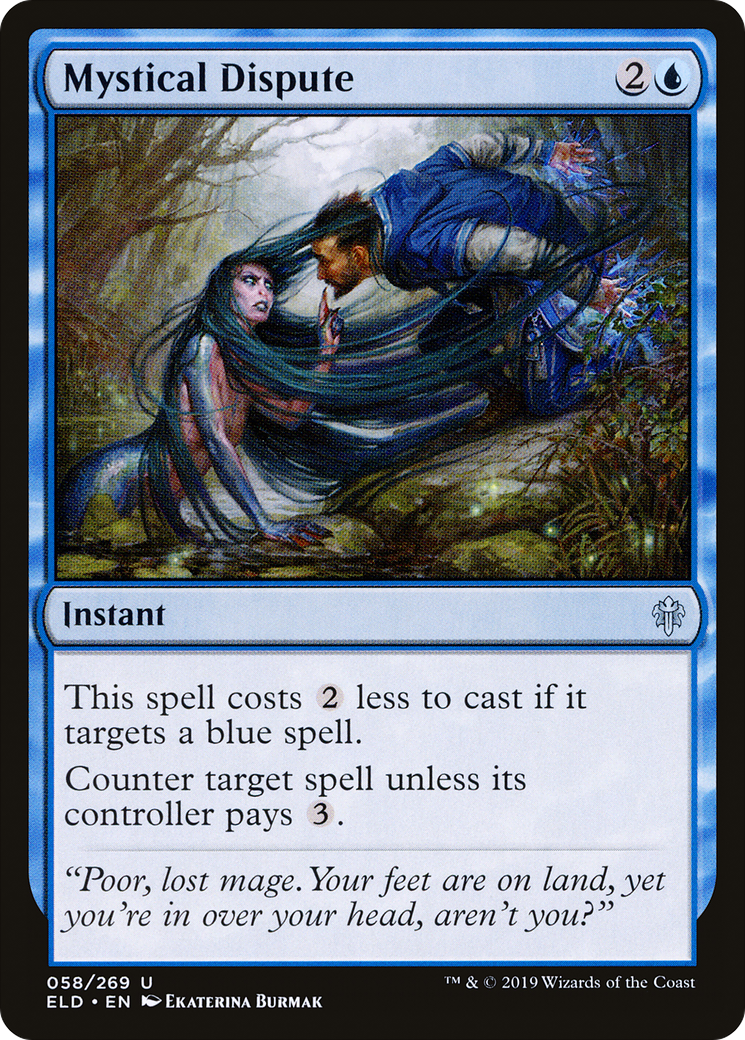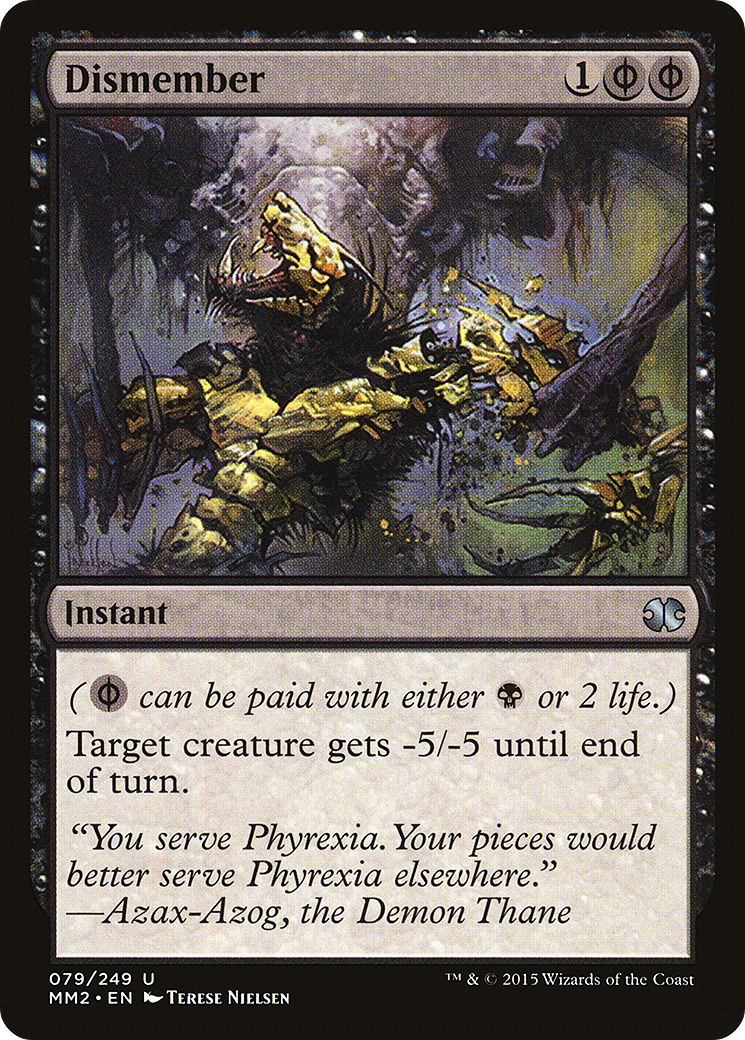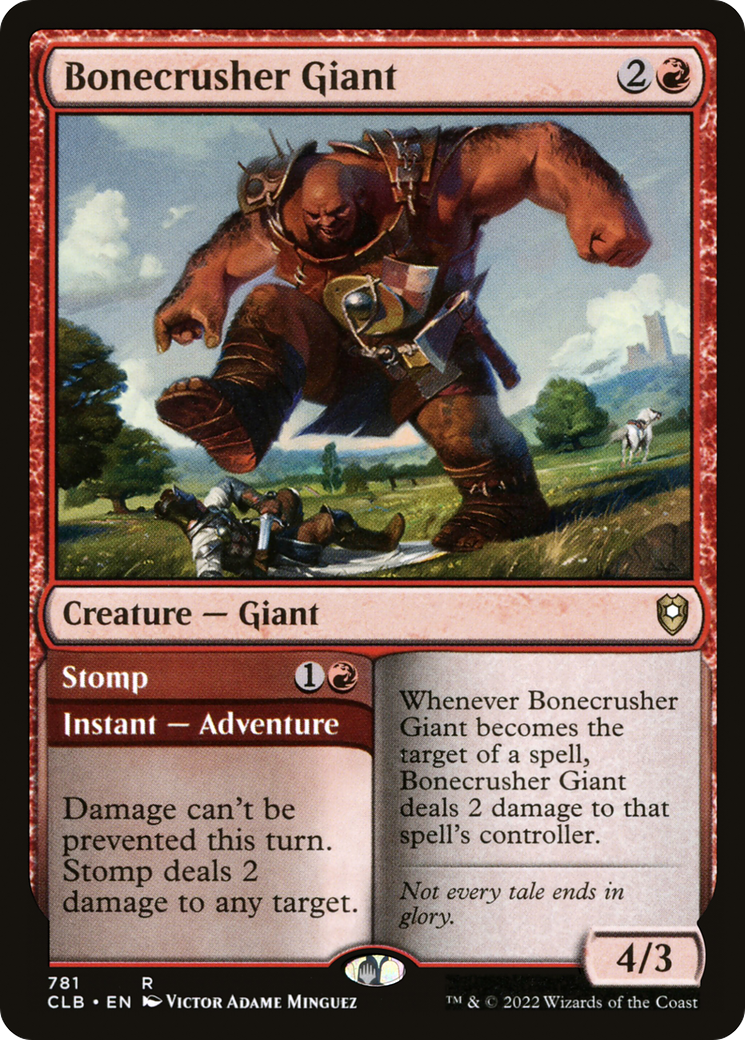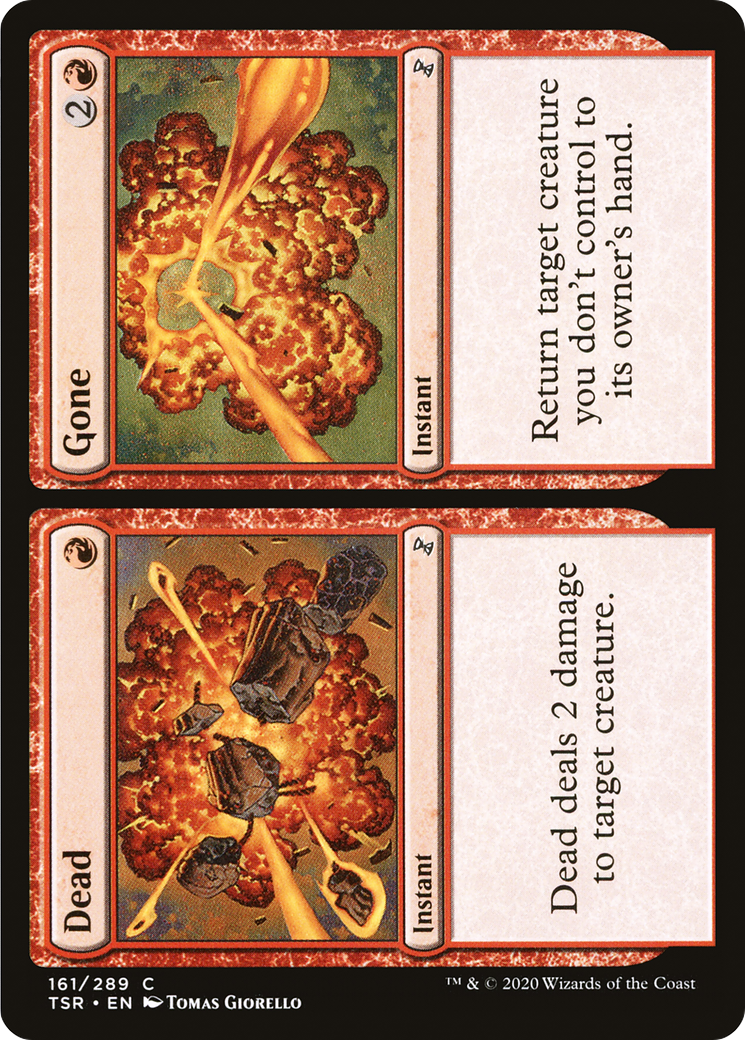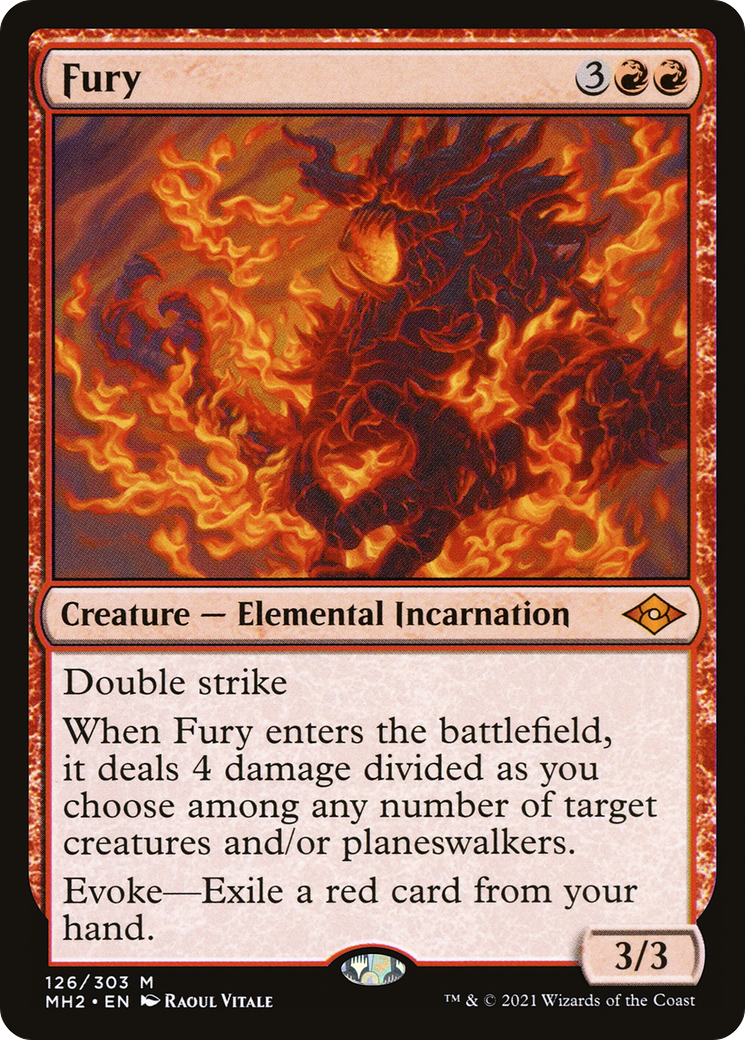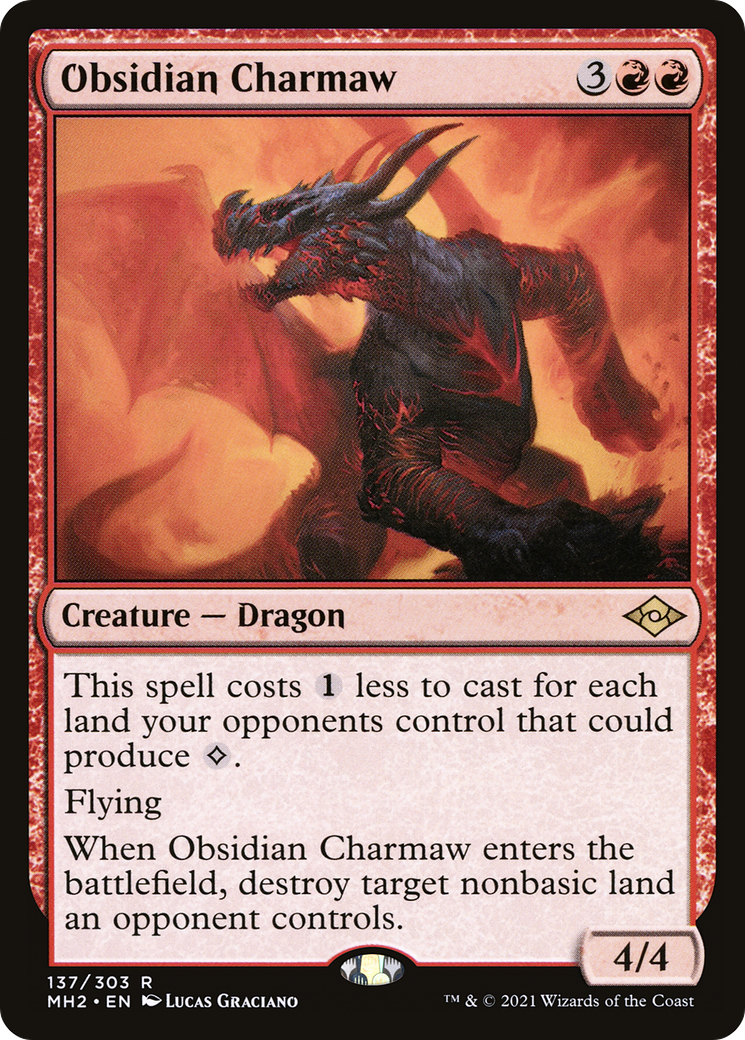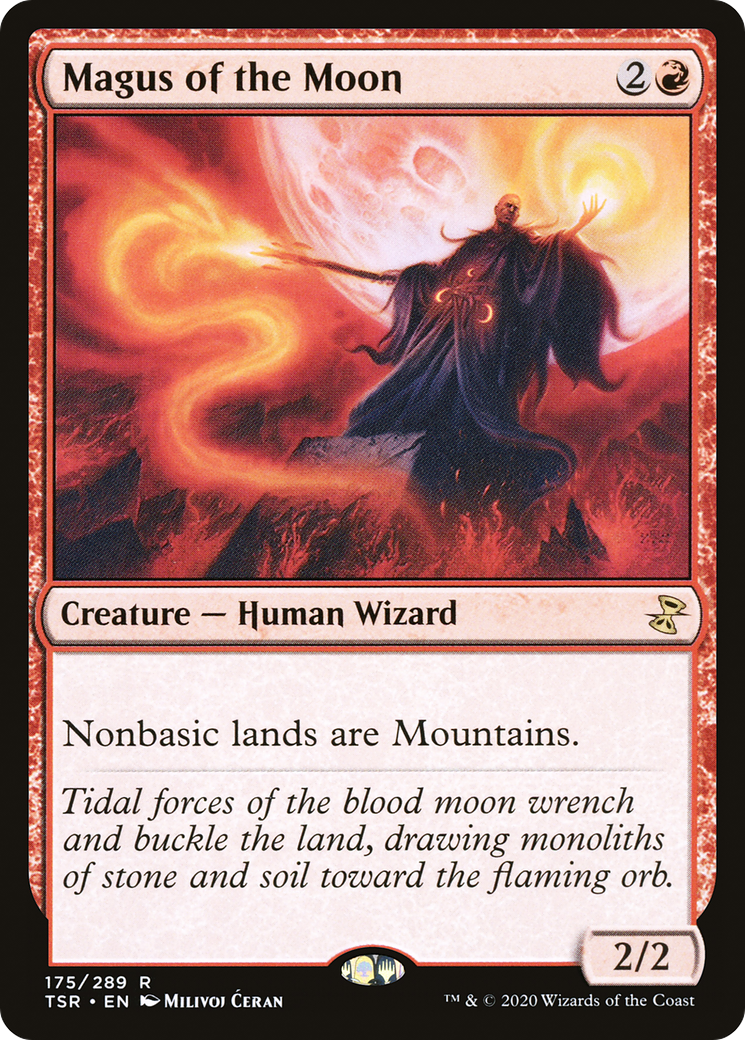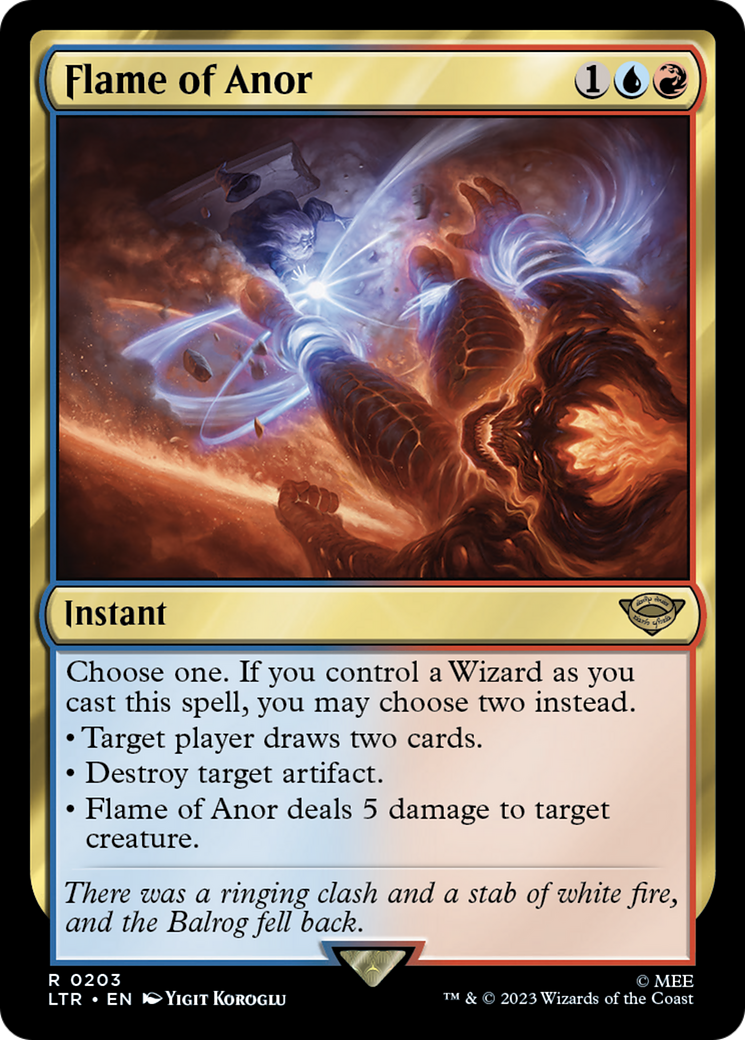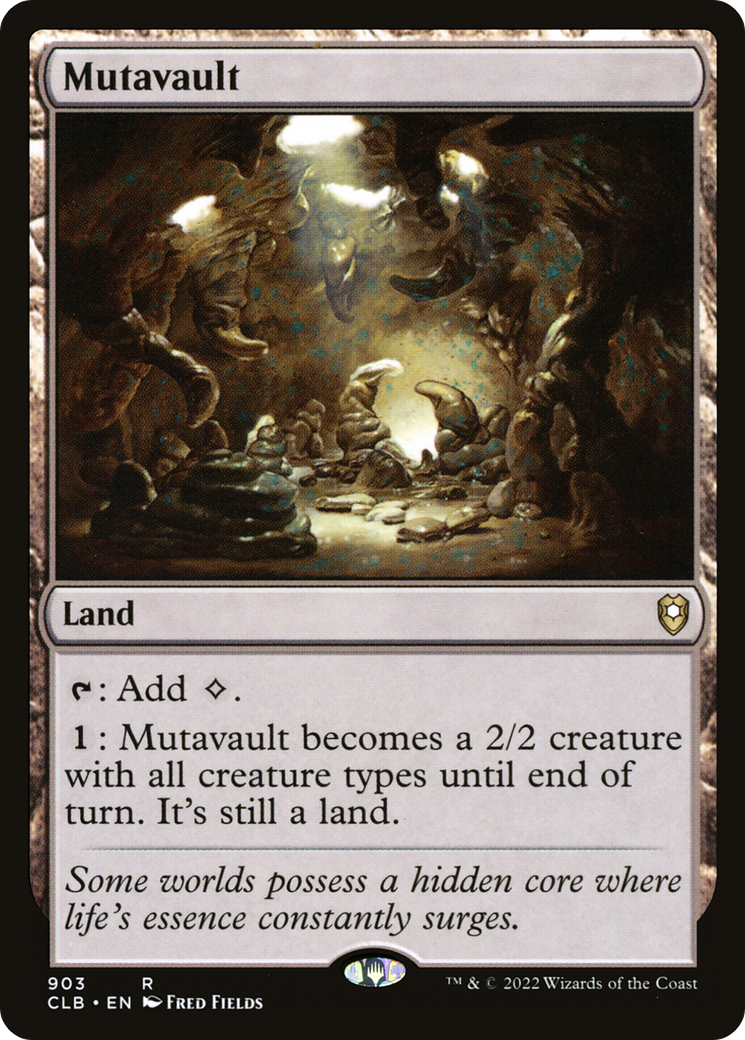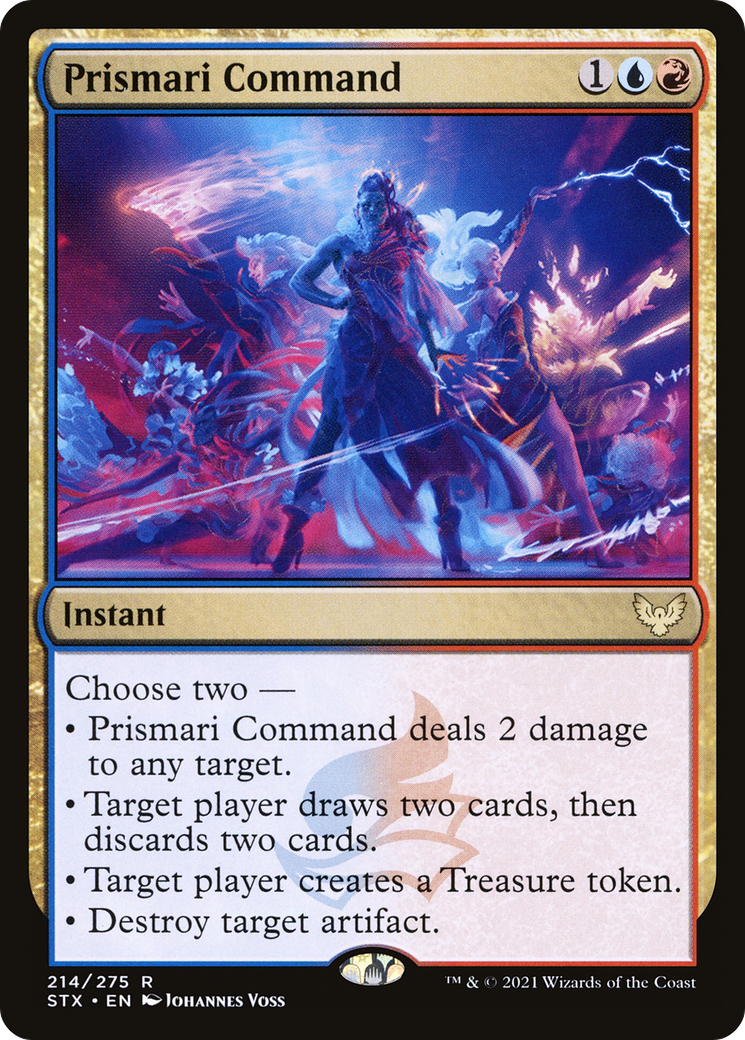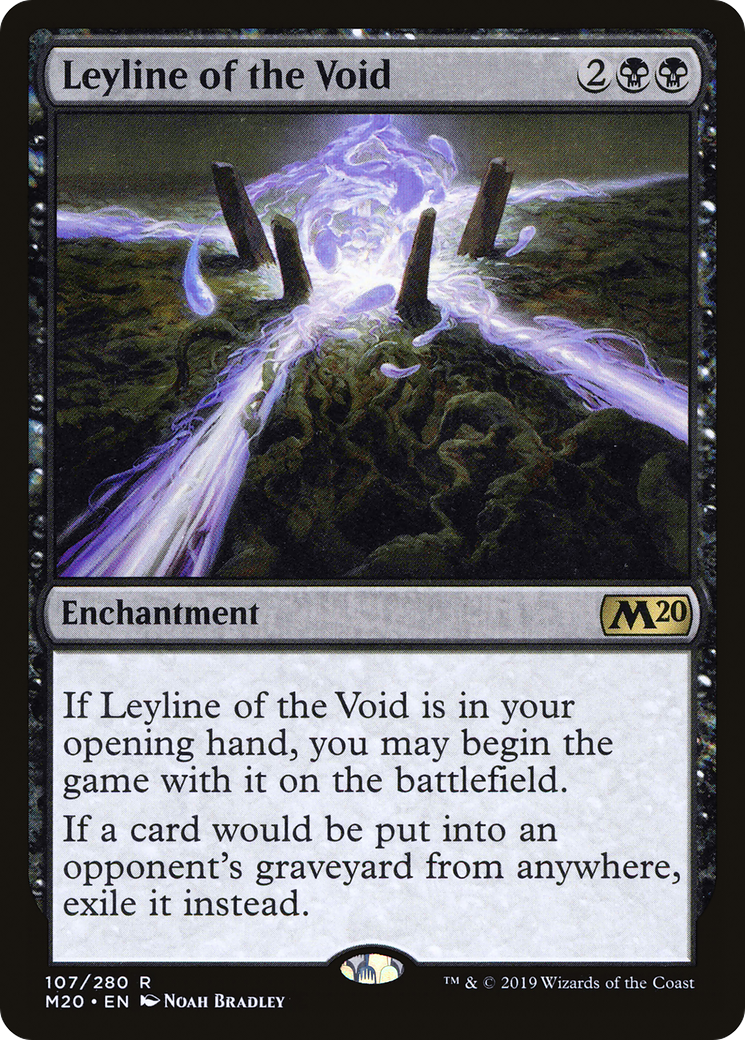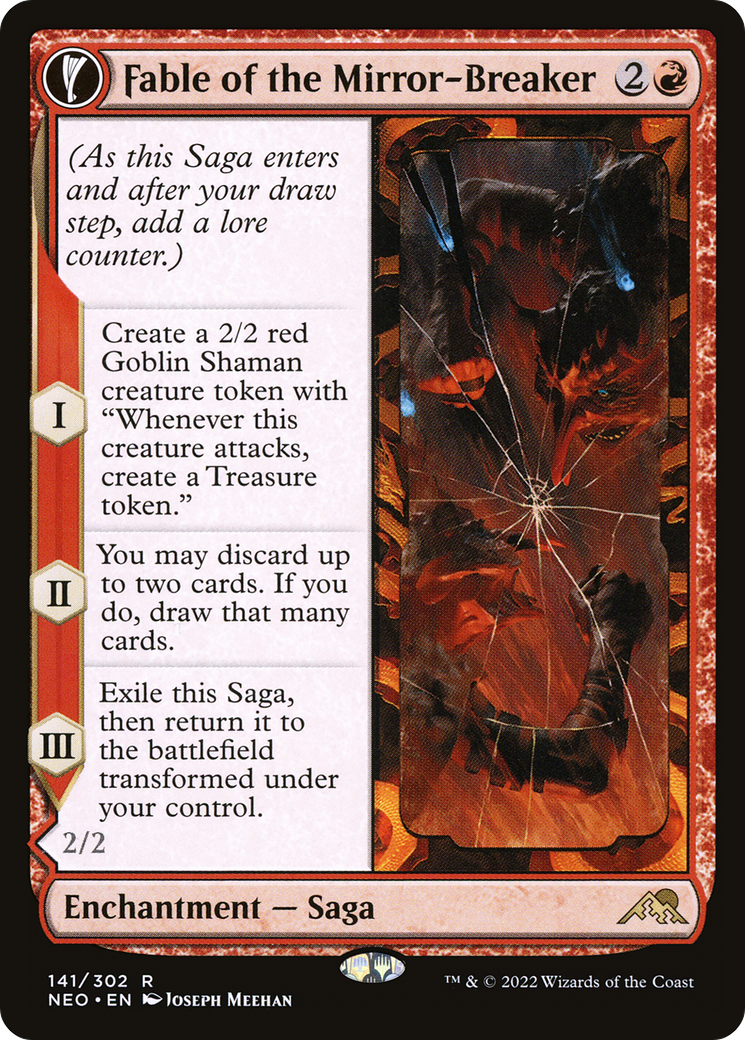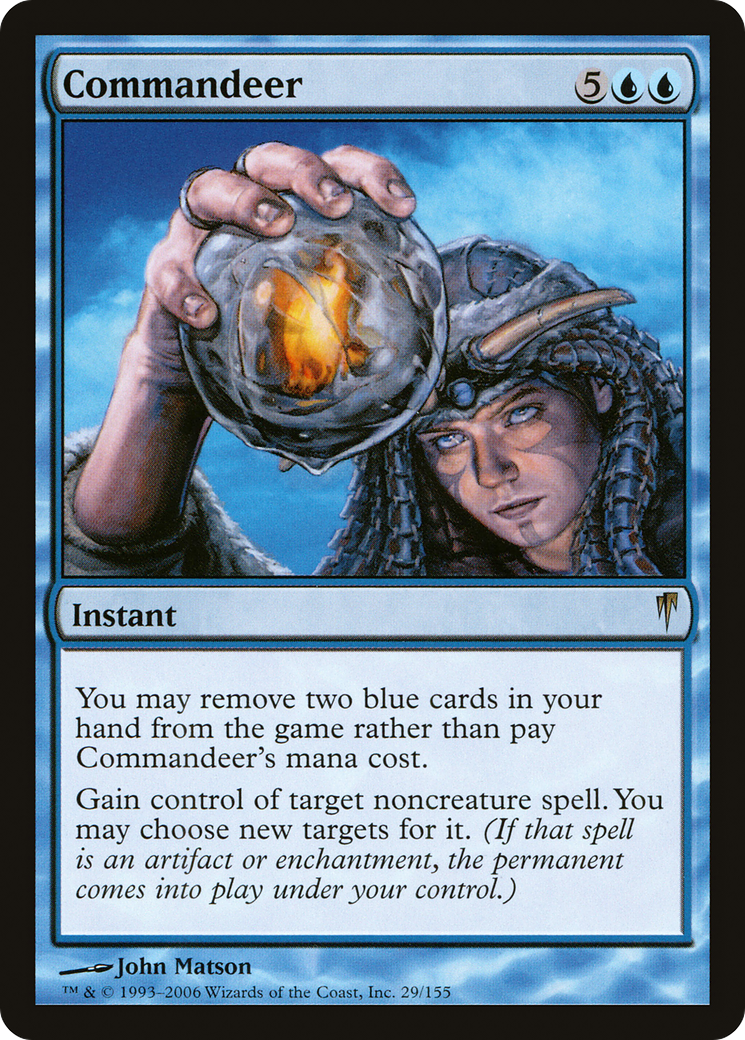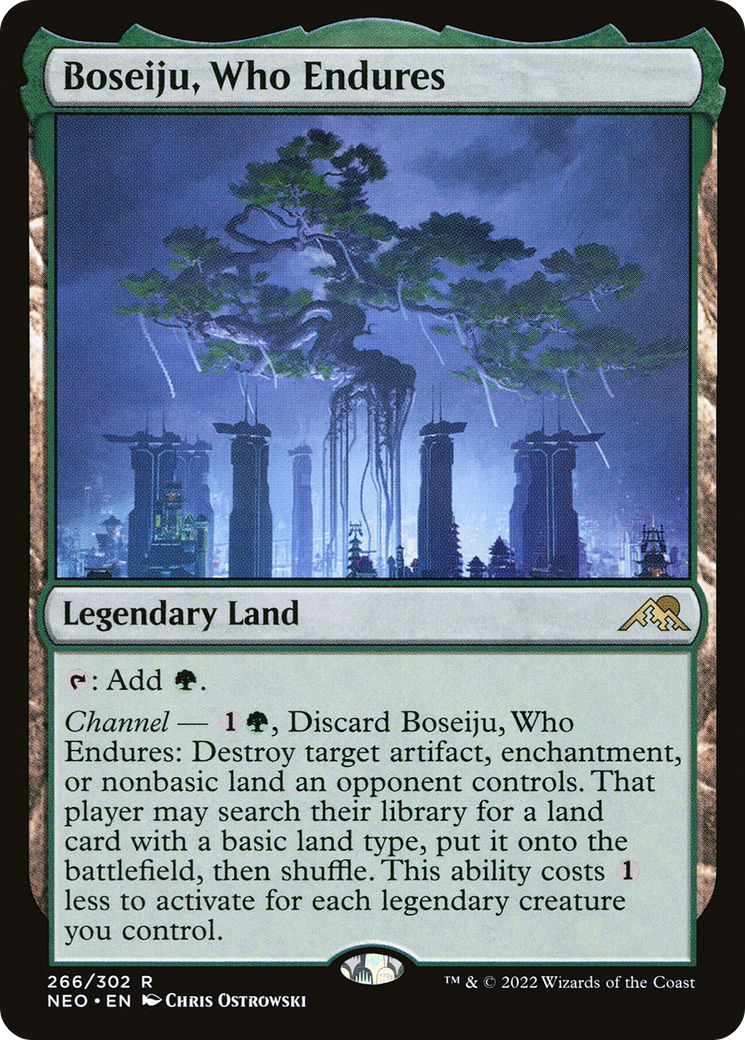Temur Rhinos for NRG Detroit
I’ve been playing plenty of Modern in preparation for NRG Detroit. Temur Rhinos has seen a resurgence and is a deck I’ve enjoyed in the past. Today I will cover the metagame changes from Pro Tour: Lord of the Rings and the many deckbuilding options for Temur Rhinos.
THE PT: LORD OF THE RINGS METAGAME
Rakdos Evoke (Scam) came into PT: Lord of the Rings with a target on its head and won the tournament. Twenty percent of the participants piloted the deck, but only a single copy made the top eight. There’s hope to be successful with other archetypes, but Rakdos is clearly a powerful choice.
Here’s the list Jake Beardsley used to win the Pro Tour:
4 Fable of the Mirror-Breaker
1 Kroxa, Titan of Death’s Hunger
4 Ragavan, Nimble Pilferer
1 Takenuma, Abandoned Mire
2 Sheoldred, the Apocalypse
1 Kroxa, Titan of Death’s Hunger
Rakdos Scam has been a reasonable choice for a while, but Orcish Bowmasters has boosted the strategy to “best deck” tier.
Temur Rhinos is the natural foil to Rakdos Scam so it’s not surprising to see a whopping three copies in the top eight as well. Rakdos is able to keep Rhino’s natural enemy, Living End, at bay. A single Dauthi Voidwalker is able to reset a Living End and exile cycling creatures.
Izzet Murktide was once a deck to beat, but has fallen short thanks to the power of Orcish Bowmasters. If you want to cast Ragavan I would suggest Rakdos for now. The more powerful mages in a tournament do prefer blue decks so I wouldn’t completely count out Murktide.
Team Handshake and others came to the conclusion Tron was under the radar and could hang with the big dogs after reassessing what is stock. By slowing down the deck is able to control the early game and then go over the top with Karn, the Great Creator and The One Ring.
Here’s the Team Handshake list piloted to a top four finish by Simon Nielsen:
4 Karn, the Great Creator
2 Ulamog, the Ceaseless Hunger
It’s clear The One Ring is here to stay, but it’s surprising Tron is the best deck featuring four copies. Tron did a good job at keeping other Ring decks, such as 4C Omnath, at bay.
Again, with three copies of Relic of Progenitus in the main deck Living End has a tough road ahead in the short run.
Tron also did a good job beating two Temur Rhinos pilots in the top eight. Christian Calcano took down Kai Budde and Simon Nielsen defeated Stefano Vinci. Something to keep in mind when designing the sideboard now that Tron is a known quantity.
It’s not hard to beat Tron when you want to so I would expect it to be less successful in the future. There will be more sideboard slots dedicated to fighting Tron which will allow other under the radar decks to shine. The wheel keeps on turning.
The last archetype to make the top eight was Amulet Titan piloted by Primeval Titan expert, Dominic Harvey. Another big mana deck able to take advantage of The One Ring. I would never suggest hopping on the Titan bandwagon due to deck complexity, but it does seem like a good choice if you’re practiced with the deck.
4 Dryad of the Ilysian Grove
2 Azusa, Lost but Seeking
1 Sunhome, Fortress of the Legion
2 Valakut, the Molten Pinnacle
Outside of the mirror, Temur Rhinos is able to make good use of Subtlety against the other decks in the top eight. When deciding the proper land disruption out of the Rhinos sideboard take note of the large number of Dismembers against potential Magus of the Moon.
POST PT: LORD OF THE RINGS METAGAME
Everyone knew Rakdos was going to be the top dog at the Pro Tour. It’s a proactive strategy that takes advantage of some of the format’s most powerful cards. Tron and Rhinos were surprises that provided an opportunity for the metagame to shift.
Hammertime is in a unique position as it can compete with Rakdos while being able to quickly dispatch Tron opponents that spend their first two turns establishing mana. Temur Rhinos has a difficult time against Hammertime without dedicated sideboard hate. Prior to LOTR every Rhinos sideboard played four Force of Vigor, but they weren’t popular at the Pro Tour.
Here’s Thomas Gunn’s 8-2 list from PT: LOTR:
Note there are two copies of Surge of Salvation in the maindeck to help protect a quick kill as well as two more in the sideboard. Force of Vigor is great against Hammertime, but a single Surge can counter it.
Urza’s Saga is powerful against Temur Rhinos as some lists are moving away from Brazen Borrower. A large construct can trump a Rhino token and take away Temur’s momentum.
Burn is also in a good position after PT: LOTR. It has a historically good matchup against Tron and Temur Rhinos.
Here’s Michael Cieszinski’s 8-2 list from PT: LOTR:
Note the four copies of Roiling Vortex in the maindeck.
When I cascade into Crashing Footfalls I’ll take five damage to make the 4/4s which will likely lose me the game. Force of Vigor isn’t effective against Vortex like it was against Eidolon of the Great Revel. I save the Force of Negation to counter a Roiling Vortex.
Brazen Borrower is an additional way to interact with enchantments.
Living End is very favored against Temur Rhinos, but is weak to Tron and Rakdos. It’s also weak to Burn with so many Vortex, but is great against Hammertime. Lord of the Rings did provide a power boost to the deck thanks to the land cyclers.
Living End also must battle through the Cascade hate from Temur’s rise in popularity. I don’t like its positioning at the moment which bodes well for Rhino mages.
Here’s Zen Takahashi’s 7-3 list from PT: LOTR:
Three copies of Generous Ent to find a basic Forest plus fetching an Island makes it very easy for Living End to play around Blood Moon. I’d like to design my Rhinos sideboard to have enough cards to board in without adding the red enchantment.
Four Color Omnath was kept in check by the presence of Tron, but is able to exist near the top tier since it can keep up with Rakdos Scam.
Since PT: LOTR had plenty of metagame surprises the control decks suffered. In a more balanced metagame I expect control to make a resurgence.
Nahuel10 took down a recent MTGO Challenge with this list:
1st MTGO MODERN CHALLENGE
4 Omnath, Locus of Creation
1 Elesh Norn, Mother of Machines
1 Nissa, Resurgent Animist
1 Emrakul, the Promised End
There are four Obsidian Charmaw and two Boseiju in the sideboard to fight Tron. This sideboard is so hateful I wouldn’t be surprised if they can win two post board games. Goes to show the great lengths competitors will go to fight Tron when it’s popular.
While the Pro Tour metagame can feel like the end state at times, this is not the case at PT: LOTR. There is a “best deck” in Rakdos Scam, but the underpinnings of the format continue to move.
CARDS TO CONSIDER IN TEMUR RHINOS
The metagame is in flux and it’s not possible to have the best deck against every popular archetype. Here are some thoughts on the flex slots.
Brazen Borrower has largely fallen out of favor because the 3/1 is weak against Rakdos Scam and their Orcish Bowmasters. It’s also not effective to bounce the incarnations against Rakdos. Borrower plays out better post sideboard because Scam boards in Chalice of the Void and takes out Orcish Bowmasters. It’s nice to reset the turn two Dauthi Voidwalker ahead of a cascade, too.
Rhinos is favored against Scam so I won’t skew the main deck too hard to contend.
Murktide Regent is more powerful thanks to adding sorceries to the graveyard with Lorien Revealed. A large flyer plays out well with Rakdos cutting to two Terminates in the PT winning list. I was surprised to see some Rhinos list cut to one copy as it performed very well for me.
Questing Beast is able to shut off the prevention shield from The One Ring. It helps quickly close the door against Tron, Amulet Titan, and 4C Omnath.
If I move away from Blood Moon and toward Obsidian Charmaw there isn’t a need for a second Forest like Kai and team played. The Mountain helps preserve life against aggressive strategies that demand quick access to Dead/Gone.
Questing Beast is also a green card for Endurance and Force of Vigor after board against Living End and big mana decks.
Mystical Dispute is still a strong card, but lost some of its flare when Izzet Murktide was pushed out of the format by Orcish Bowmaster. The presence of up to four Subtlety makes it less of a requirement as well. Note that you can’t counter Teferi if the opponent leads on Delighted Halfling which also hampers Dispute’s stock.
I expect blue decks to be disproportionately popular since they offer stronger players more agency. Rhinos are strong against the non-blue decks, such as Scam and Yawgmoth, so it’s worth the hedge.
Preordain being unbanned also offers an opportunity for new strategies to emerge. Best to hedge with at least three Mystical Disputes.
Dismember has high diminishing returns, but is able to stop a first turn scam from Rakdos on the play. Despite there being fewer Ragavans in the format you do need to respect them out of Rakdos. Think of it as a fifth Dead/Gone. I’ve been impressed with Dismember and plays best with multiple Murktide Regents as it fills the graveyard with spells.
Bonecrusher Giant isn’t efficient removal, but does turn off The One Ring’s prevention shield. The 4/3 isn’t impactful in game one as most decks look to win quickly. After sideboard the 4/3 is stronger as there are plenty of ways to fight your primary cascade game plan. This creates a conundrum where Bonecrusher is a low-impact sideboard card, but can’t utilize the entire effect in game one.
One option to fit a maindeck Bonecrusher is to cut the fourth Dead/Gone. I’ve found the difference between two and one mana to be big in the early turns as I may have a Triome or need to cycle Lorien Revealed to guarantee a turn three cascade.
The 22nd land is a flex slot. I have played a Fiery Islet as my last land and was happy with it. It’s not a requirement, but having more lands makes it more likely to cast Lorien Revealed. Remember to not walk into your opponent’s dead Spell Pierces and Orcish Bowmasters. I’m more likely to cast it post board against Rakdos since they will cut the Bowmasters and expect more soft counters against blue in games two and three.
The fourth Dead/Gone can be cut if you play at least one Dismember. I wouldn’t play less than four ways to kill Ragavan on the draw and five provides additional insulation. It’s a passable spell in the Rhinos mirror and there aren’t enough slots to board them all out as some Subtleties need to be cut as well.
Fury was once a four-of, but has been relegated to cute singleton at the most in the maindeck. Another way to fight Rakdos. It can fight Ragavan on the draw and help out against Hammertime. The ETB ability can destroy a Rhino and block the remainder making it strong in the late game.
I’m more likely to hard cast elementals after sideboard because my rhinos may be pressured by Chalice of the Void and Engineered Explosives.
Subtlety is weak in the mirror, but strong against the rest of the format. I’ve also been happy with Subtlety against Burn and Hammertime as a way to buy time to cascade. It’s strong against Living End to protect your Endurance from opposing Subtlety as well as interacting with Grief.
I’m more likely to hard cast Subtlety after sideboard when my primary cascade game plan may be hampered. The presence of so many blue pitch spells makes me favor even more blue cards in the maindeck.
Obsidian Charmaw serves as more targeted hate for Tron. A 4/4 with flying can pressure Karn, the Great Creator after the Charmaw destroyed a land. In addition, it can be brought in against Hammertime to destroy Inkmoth Nexus and Urza’s Saga. Even a four-mana Charmaw is acceptable against Amulet Titan if it means destroying a bounce land.
Tron plays The One Ring and Karn, the Great Creator with four mana making Blood Moon less effective. Oblivion Stone is already good against Rhinos, too. They don’t need to assemble Tron to be threatening.
Magus of the Moon provides a clock and disruption, too. The drawback to Magus in this current environment is both Amulet Titan and Tron play many copies of Dismember in their 75. There’s a cute upside with Magus that it’s the only playable wizard for Flame of Anor outside of Mutavault.
Flame of Anor has picked up in popularity thanks to Kai and LSV. It’s primarily played in the sideboard to destroy hate pieces like Chalice of the Void and Engineered Explosives without using the narrow cards like Force of Vigor. It can also be played in the maindeck alongside a couple Mutavault as it’s a wizard to get two modes.
Note the templating of Flame of Anor. You must control a wizard when casting and not when it resolves. Activating Mutavault will guarantee the two modes.
Mutavault is picking up popularity thanks to LSV. A couple copies boost the power of Flames of Anor. This is an acceptable way to build Rhinos.
Prismari Command is another option to destroy hateful artifacts. Command is better against Rakdos as it can kill both a Chalice of the Void and Dauthi Voidwalker/Ragavan in one shot. While it’s better at fighting hate pieces the looting effect is weaker than Flame’s ability to draw two cards. Rhinos is already very good against Rakdos so I haven’t considered Prismari Command although I see it in other lists.
I have preferred Brazen Borrower to deal with hateful artifacts because two mana doesn’t disrupt your cascade curve.
Leyline of the Void is another way to fight the graveyard alongside Endurance. I wouldn’t board in Leyline against anything other than Living End, Dredge, and other hyperlinear strategies. It has upside against Scam and Yawgmoth, but those matchups are good enough that I don’t want to introduce a card with high variance. There’s a big cost to playing Leyline as it means 6-7 cards in the board are for Living End. It’s that bad of a matchup, but for now I’m looking for Tron and Rakdos to keep Living End at bay.
Fable of the Mirror-Breaker never caught on as a sideboard card, but it has impressed me. One way to protect your cascade game plan after sideboard is to destroy artifacts while the other way is to play different threats. I’m considering playing a single Fable in the board and bring it in against most opponents as their deck is filled with hate cards.
I’m able to play a normal game against Rakdos after sideboard with Chalice of the Void on the battlefield by curving Endurance into Subtlety and other elementals.
What keeps me from playing Fable currently is I only want enough anti-Rakdos cards to swap for Force of Negation and Mystical Dispute. Endurance and Fury already take up plenty of sideboard space.
Commandeer can steal a powerful planeswalker from Tron or a pair of Rhinos in the mirror. I haven’t seen the card work as intended yet and I don’t plan on playing it to find out. Too much of a glass cannon for me.
Boseiju, Who Endures serves as a 22nd land in the sideboard. The legend rule makes it not a popular card to feature two copies, but becomes more versatile in post board games against potential Chalices and Engineered Explosives. It’s also another hate card against Tron and Hammertime.
On the play it can be a straightforward swap for a Gemstone Caverns or it can be another mana source as it’s likely to be channeled after board. A 22nd land after sideboard is more important than game one as you’re more likely to hard cast pitch spells.
As you can see there’s not only plenty of metagame shifts occurring, but many potential cards to put into the deck. Here’s my current list I’m favoring for NRG Detroit this weekend:
KYLE BOGGEMES
TEMUR RHINOS
NRG DETROIT
4 Lorien Revealed
4 Shardless Agent
4 Violent Outburst
4 Crashing Footfalls
4 Force of Negation
4 Dead / Gone
3 Mystical Dispute
2 Murktide Regent
1 Dismember
1 Brazen Borrower
4 Subtlety
4 Fire / Ice
1 Otawara, Soaring City
1 Boseiju, Who Endures
1 Ketria Triome
1 Steam Vents
1 Breeding Pool
1 Stomping Ground
1 Forest
1 Mountain
2 Island
4 Misty Rainforest
1 Scalding Tarn
4 Wooded Foothills
2 Gemstone Caverns
Sideboard
2 Fury
4 Endurance
3 Force of Vigor
2 Obsidian Charmaw
2 Questing Beast
1 Boseiju, Who Endures
1 Brazen Borrower
Rhinos is well-positioned for NRG Detroit. The metagame is shifting after PT: LOTR which means I want to be proactive. It’s also going to likely be a nine round event so I want my deck to be relatively simple.

